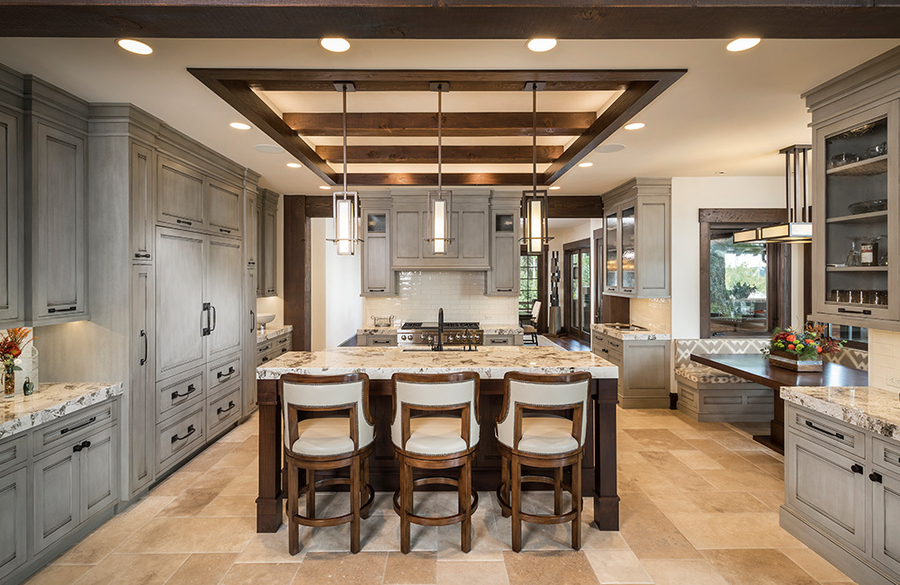5 Lighting Design Tips for a Brighter, More Inviting Kitchen
Make Your Kitchen Shine with Layered Lighting

Kitchens are such an important space in the home. The kitchen is the hub of the modern home, a place that transcends food preparation. It’s a gathering place for the family, a social space for family and friends, a place for homework, school projects, and so much more. And of course, cooking and enjoying food.
If there’s a part of a home that can benefit from the right lighting design, it's the kitchen. So how can you make sure your kitchen is both a useful and inviting place? Of course, lighting isn't the only tool, but it can play a huge role in going from a merely average to a great kitchen where everyone hangs out. Here are five tips for elevating your kitchen illumination from the pros at GHT Group, Alpharetta, and Metro Atlanta’s premier interior lighting design company.
SEE ALSO: What an Interior Lighting Design Company Can Do for You
Layered Lighting
As we’ve written before on this subject, the best lighting design uses a layered approach – ambient, task, and accent lighting. Here's how the layered model applies to kitchens. Ambient lighting, as in other rooms, illuminates floors and walls for general visibility and navigation. Task lighting illuminates work areas like countertops, islands, sinks, and specialty areas like coffee bars. Accent lighting tends to fall between ambient and task lighting in brightness and is used to highlight an architectural feature, a ceiling detail, or a curio or china cabinet. Good use of a layered approach will minimize negatives like shadows or glare, something you always want to avoid with any interior lighting.
Ambient Lighting Tips
Recessed lighting is popular for ambient kitchen lighting. When planning recessed lights, a good rule is to allow a space between the fixtures that is half the ceiling height, i.e., five feet for a 10-foot ceiling. This avoids casting shadows or too much light in the room. Recessed lights should also be set a few inches back from the front edge of countertops to minimize shadowing effects.
Task Lighting Tips
When using pendant lights over work surfaces like food prep stations and sinks, position them no closer than two to three feet from the surface to avoid glare. For undercabinet task lighting – for which LED technology has largely replaced halogen – space them toward the back of the cabinet to prevent countertop glare.
Accent Lighting Tips
Do you have interesting ceiling details like color, tiles, or texture? Use cove lighting to highlight it. Cove lights can also make excellent dimmed late-night lighting for navigation without turning on recessed lighting.
Use Color Temperature
Today’s LED lighting comes in varying white color temperatures. But did you know that some LED lighting, like Lutron’s Ketra, can change color temperature and display full color? This tunable lighting has many uses for both aesthetic and wellness benefits. Color temperatures for ambient lighting in the 3500K and up range emit brighter white light for active settings. Accent lighting in the 2700K to 3000K range is excellent for the warm glow you can use for backlighting interesting details. But the best part about tunable lighting is that you can change it on a whim. Go with color for a party, or turn it on bright white for deep cleaning and maintenance of your kitchen. Vary color temperature using lighting control during the day and evening to go from brighter white light for focus to more relaxing, warmer tones for dinner and relaxation.
Want more professional interior lighting design ideas? Let the experts at GHT Group help. Call us at (770) 955-8909, contact us here, or use the chatbox below to connect with us right away. We look forward to working with you!